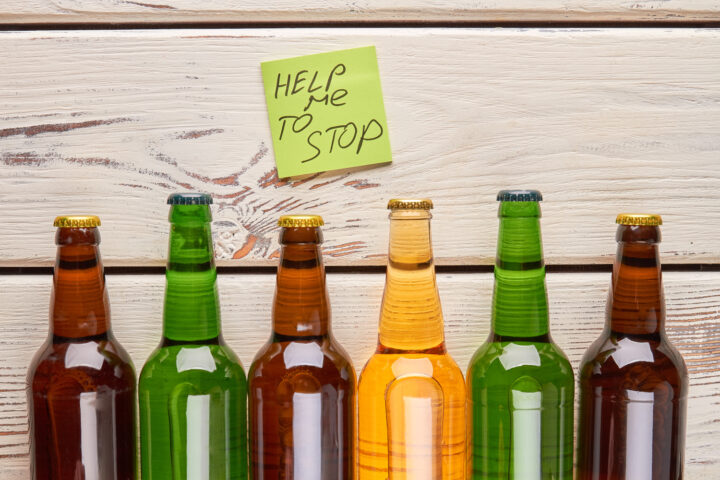Helping Yourself on the Road to Recovery for Post-Traumatic Stress Disorder
For all too many addicts, returning from addiction means coping with symptoms of post-traumatic stress disorder (PTSD). You may be having a hard time readjusting to life away from drugs/alcohol. Or you may constantly be feeling on edge, emotionally numb and disconnected, or close to panicking or exploding.
But no matter how long the wait times, or how isolated or emotionally cut off from others you feel, it’s important to know that you’re not alone and there are plenty of things you can do to start feeling better.
These steps can help you learn to deal with nightmares and flashbacks, cope with feelings of depression, anxiety or guilt, and regain your sense of control.
What you can do
- Understand how PTSD affects your nervous system
- Get up and get moving to help your nervous system become unstuck
- Learn how you can calm yourself
- Make face-to-face connection with others a priority
- Discover how to ground yourself during a flashback or nightmare
- Learn the keys to dealing with survivor’s guilt
- Learn more by reading the related articles
What causes PTSD in addicts?
Post-traumatic stress disorder (PTSD), occurs after you experience severe trauma or a life-threatening event. It’s normal for your mind and body to be in shock after such an event, but this normal response becomes PTSD when your nervous system gets “stuck.”
Your nervous system has two automatic or reflexive ways of responding to stressful events:
Mobilization, or fight-or-flight, occurs when you need to defend yourself or survive the danger of a combat situation. Your heart pounds faster, your blood pressure rises, and your muscles tighten, increasing your strength and reaction speed. Once the danger has passed, your nervous system calms your body, lowering your heart rate and blood pressure, and winding back down to its normal balance.
Immobilization occurs when you’ve experienced too much stress in a situation and even though the danger has passed, you find yourself “stuck.” Your nervous system is unable to return to its normal state of balance and you’re unable to move on from the event. This is PTSD.
Recovering from PTSD involves transitioning out of the mental and emotional “war zone you’re still living in” and helping your nervous system become “unstuck.”
Symptoms of PTSD in addicts
While you can develop symptoms of PTSD in the hours or days following a traumatic event, sometimes symptoms don’t surface for months or even years after you return from the event. While PTSD develops differently from person to person, there are four symptom clusters:
1. Recurrent, intrusive reminders of the traumatic event, including distressing thoughts, nightmares, and flashbacks where you feel like the event is happening again. Experiencing extreme emotional and physical reactions to reminders of the trauma such as panic attacks, uncontrollable shaking, and heart palpitations.
2. Extreme avoidance of things that remind you of the traumatic event, including people, places, thoughts, or situations you associate with the bad memories. Withdrawing from friends and family and losing interest in everyday activities.
3. Negative changes in your thoughts and mood, such as exaggerated negative beliefs about yourself or the world and persistent feelings of fear, guilt, or shame. Diminished ability to experience positive emotions.
4. Being on guard all the time, jumpy, and emotionally reactive, as indicated by irritability, anger, reckless behavior, difficulty sleeping, trouble concentrating, and hypervigilance.
Suicide prevention in addicts with PTSD
It’s common for addicts with PTSD to experience suicidal thoughts. Feeling suicidal is not a character defect, and it doesn’t mean that you are crazy, weak, or flawed.
If you are thinking about taking your own life, seek help immediately. Please talk to someone you trust, or call a suicide helpline.
PTSD in addicts
Recovery Step 1: Get Moving
As well as helping to burn off adrenaline, exercise can release endorphins and improve your mood. By really focusing on your body and how it feels as you exercise, you can even help your nervous system become “unstuck.”
Exercise that is rhythmic and engages both your arms and legs—such as running, swimming, basketball, or even dancing—works well if, instead of continuing to focus on your thoughts as you move, you focus on how your body feels.
Notice the sensation of your feet hitting the ground, for example, or the rhythm of your breathing, or the feeling of wind on your skin.
Rock climbing, boxing, weight training, or martial arts can make it easier to focus on your body movements—after all, if you don’t, you could get injured.
Try to exercise for 30 minutes or more each day—or if it’s easier, three 10-minute spurts of exercise are just as good.
The Benefits of the Great Outdoors
Pursuing outdoor activities in nature like hiking, camping, mountain biking, rock climbing, whitewater rafting, and skiing can help challenge your sense of vulnerability and help you transition back into civilian life. Seek out local organisations that offer outdoor recreation opportunities.
Step 2: Self-regulate your nervous system
PTSD can leave you feeling vulnerable and helpless. But you have more control over your nervous system than you may realize. When you feel agitated, anxious, or out of control, these tips can help you change your arousal system and calm yourself.
Mindful breathing: To quickly calm yourself in any situation, simply take 60 breaths, focusing your attention on each out breath.
Sensory input: Just as loud noises, certain smells, or the feel of sand in your clothes can instantly transport you back to the combat zone, so too can sensory input quickly calm you. Everyone responds a little differently, so experiment to find what works best for you. Think back to your time of the event: what brought you comfort at the end of the day? Perhaps it was looking at photos of your family? Or listening to a favorite song, or smelling a certain brand of soap? Or maybe petting an animal quickly makes you feel calm?
Reconnect emotionally. By reconnecting to uncomfortable emotions without becoming overwhelmed, you can make a huge difference in your ability to manage stress, balance your moods, and take back control of your life. See our Emotional Intelligence Toolkit (https://www.emotional-intelligence-toolkit/index.html)
Step 3: Connect with others
Connecting with others face to face doesn’t have to mean a lot of talking. For any person with PTSD, it’s important to find someone who will listen without judging when you want to talk, or just hang out with you when you don’t. That person may be your significant other, a family member, one of your buddies or a friend.
Or try:
Volunteering your time or reaching out to someone in need. This is a great way to both connect to others and reclaim your sense of power.
Joining a PTSD support group. Connecting with other addicts facing similar problems can help you feel less isolated and provide useful tips on how to cope with symptoms and work towards recovery.
Connecting with other people
You may feel like the people in your life can’t understand you since they haven’t been through what you have or seen the things you have. But people don’t have to have gone through the exact same experiences to be able to offer support. What matters is that the person you’re turning to cares about you, is a good listener, and a source of comfort.
If you’re not ready to open up about what happened, that’s perfectly okay. Instead of going into a blow-by-blow account of events, you can just talk about how you feel. You can tell the other person what they can do to help, whether it’s just sitting with you, listening, or doing something practical.
Remember: people who care about you welcome the opportunity to help; being supportive is not a burden for them.
If connecting is difficult: No matter how close you are to someone, PTSD can mean that you still don’t feel any better after talking. If that describes you, there are ways to help the process along.
- Exercise or move. Before chatting with a friend, either exercise or move around. Jump up and down, swing your arms and legs, or just flail around. Your head will feel clearer and you’ll find it easier to connect.
- Vocal toning. As strange as it sounds, vocal toning is a great way to open up to social engagement. Sit straight and simply make “mmmm” sounds. Change the pitch and volume until you experience a pleasant vibration in your face.
Step 4: Take care of your body
Without the rush of still being in a combat zone, you may feel strange or even dead inside and find it difficult to relax. Many addicts are drawn to things that offer a familiar adrenaline rush, whether it’s caffeine, drugs, violent video games, driving recklessly, or daredevil sports. However, the symptoms of PTSD can be hard on your body and mind so it’s important to put a priority on sleep, healthy food, and calming activities.
- Healthy habits
Take time to relax with relaxation techniques (/articles/stress/relaxation-techniques-for- stress-relief.htm) such as massage, meditation, or yoga. - Avoid alcohol and drugs (including nicotine). It can be tempting to turn to drugs and alcohol to numb painful feelings and memories and get to sleep. But substance abuse (/home-pages/addiction.htm) (and cigarettes) can make the symptoms of PTSD worse.
- Find safe ways to blow off steam. Pound on a punching bag, pummel a pillow, sing along to loud music, or find a secluded place to scream at the top of your lungs.
- Support your body with a healthy diet (/home-pages/healthy-eating.htm). Omega-3s play a vital role in emotional health so incorporate foods such as fatty fish, flaxseed, and walnuts into your diet.
- Limit processed and fried food, sugars, and refined carbs which can exacerbate mood swings and energy fluctuations.
- Get plenty of sleep. Sleep deprivation exacerbates anger, irritability, and moodiness. Aim for 7 to 9 hours of quality sleep each night (/articles/sleep/how-to-sleep-better.htm).
Step 5: Deal with flashbacks, nightmares, and intrusive thoughts
Flashbacks usually involve visual and auditory memories. It feels as if it’s happening all over again so it’s vital to reassure yourself that the experience is not occurring in the present.
- State to yourself (out loud or in your head) the reality that while you feel as if the trauma is currently happening, you can look around and recognise that you’re safe.
- Use a simple script when you awaken from a nightmare or start to experience a flashback: “I feel [panicked, overwhelmed, etc.] because I’m remembering [traumatic event], but as I look around I can see that the event isn’t happening right now and I’m not in danger.”
- Describe what you see when look around (name the place where you are, the current date, and three things you see when you look around).
- Try tapping your arms to bring you back to the present.
Tips for grounding yourself during a flashback:
- Movement – Move around vigorously (run in place, jump up and down, etc.); rub your hands together; shake your head
- Touch – Splash cold water on your face; grip a piece of ice; touch or grab on to a safe object; pinch yourself; play with worry beads or a stress ball
- Sight – Blink rapidly and firmly; look around and take inventory of what you see Sound – Turn on loud music; clap your hands or stomp your feet; talk to yourself (tell
yourself you’re safe, you’ll be okay) - Smell – Smell something that links you to the present (coffee, mouthwash, your wife’s perfume) or a scent that has good memories
- Taste – Suck on a strong mint or chew a piece of gum; bite into something tart or spicy; drink a glass of cold water or juice
Step 6: Work through survivor’s guilt
Feelings of guilt are very common among addicts with PTSD. You may have seen people injured or killed, often your friends and comrades. You may ask yourself questions such as: Why did I survive when others didn’t? You may end up blaming yourself for what happened and believing that your actions (or inability to act) led to someone else’s death. You may feel that you’re the one who should have died. This is survivor’s guilt.
Healing from survivor’s guilt
Healing doesn’t mean that you’ll forget what happened or those who died. And it doesn’t mean you’ll have no regrets. What it does mean is that you’ll look at your role more realistically: Is the amount of responsibility you’re assuming reasonable? Could you really have prevented or stopped what happened?
Are you judging your decisions based on full information about the event, or just your emotions? Did you do your best at the time, under challenging circumstances? Do you truly believe that if you had died, someone else would have survived?
Honestly assessing your responsibility and role can free you to move on and grieve your losses. Instead of punishing yourself, you can redirect your energy into honoring those you lost and finding ways to keep their memory alive.
Step 7: Seek professional treatment
Professional treatment for PTSD can help you deal with the trauma you’ve experienced and may involve:
- Cognitive-behavioral therapy (CBT) or counselling. This involves gradually “exposing” you to reminders of the event and replacing distorted thoughts with a more balanced picture.
Medication, such as antidepressants. While medication may help you feel less sad or worried, it doesn’t treat the causes of PTSD. - EMDR (Eye Movement Desensitization and Reprocessing). This incorporates elements of CBT with eye movements or other rhythmic, left-right stimulation to help you become “unstuck.”
Helping a person with PTSD
When a loved one returns from a traumatic event with PTSD, it can take a heavy toll on your relationship and family life. You may have to take on a bigger share of household tasks, deal with the frustration of a loved one who won’t open up, or even deal with anger or other disturbing behaviour.
Don’t take the symptoms of PTSD personally. If your loved one seems distant, irritable, angry, or closed off, remember that this may not have anything to do with you or your relationship.
Don’t pressure your loved one into talking. Many addicts with PTSD find it difficult to talk about their experiences. Never try to force your loved one to open up but let him know that you’re there if he/she wants to talk. It’s your understanding that provides comfort, not anything you say.
Be patient and understanding. Getting better takes time so be patient with the pace of recovery. Offer support but don’t try to direct your loved one.
Try to anticipate and prepare for PTSD triggers such as certain sounds, sights, or smells. If you are aware of what causes an upsetting reaction, you’ll be in a better position to help your loved one calm down. Take care of yourself. Letting your loved one’s PTSD dominate your life while ignoring your own needs is a surefire recipe for burnout. Make time for yourself and learn to manage stress (/articles/stress/stress-management.htm). The more calm, relaxed, and focused you are, the better you’ll be able to help your loved one.
Related HelpGuide articles
• How to Help Someone with PTSD: (/articles/ptsd-trauma/ptsd-in-the-family.htm) Helping a Friend or Loved One Deal with Post-Traumatic Stress Disorder
• PTSD Symptoms, Self-Help, and Treatment: (/articles/ptsd-trauma/post- traumatic-stress-disorder.htm) Overcoming Post-Traumatic Stress Disorder and Moving on with Your Life
• Traumatic Stress: (/articles/ptsd-trauma/traumatic-stress.htm) Recovering from the Stress of Experiencing or Being Overexposed to Media Coverage of Traumatic Events
Authors: Melinda Smith, M.A., Lawrence Robinson, and Jeanne Segal, Ph.D. Last updated: January 2017.
HelpGuide.org REPRINT
©Helpguide.org. All rights reserved. The content of this reprint is for informational purposes only and NOT a substitute for professional advice, diagnosis, or treatment.
Visit https://www.helpguide.org/ for the complete article which includes references, related articles and active links.



